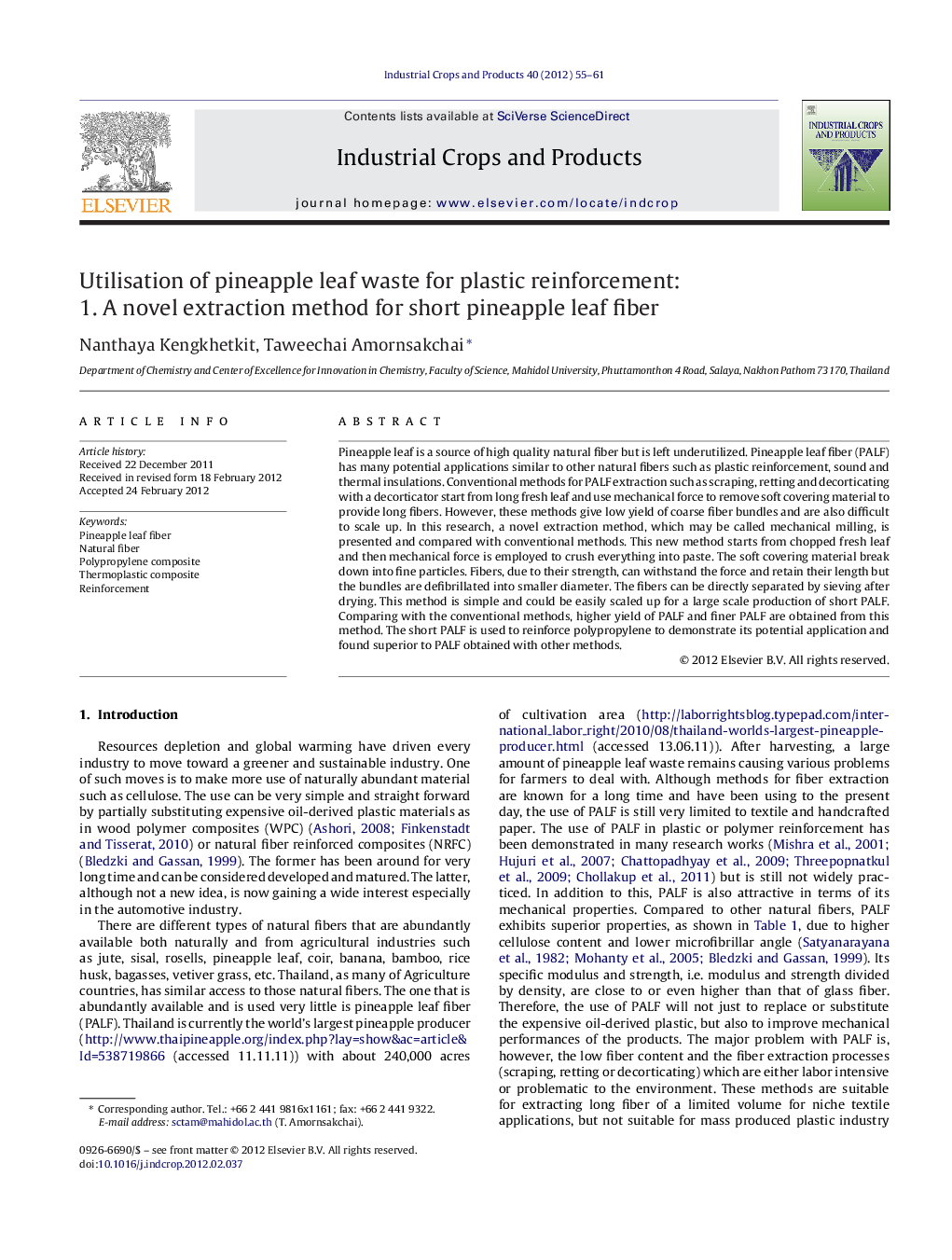| Article ID | Journal | Published Year | Pages | File Type |
|---|---|---|---|---|
| 4513960 | Industrial Crops and Products | 2012 | 7 Pages |
Pineapple leaf is a source of high quality natural fiber but is left underutilized. Pineapple leaf fiber (PALF) has many potential applications similar to other natural fibers such as plastic reinforcement, sound and thermal insulations. Conventional methods for PALF extraction such as scraping, retting and decorticating with a decorticator start from long fresh leaf and use mechanical force to remove soft covering material to provide long fibers. However, these methods give low yield of coarse fiber bundles and are also difficult to scale up. In this research, a novel extraction method, which may be called mechanical milling, is presented and compared with conventional methods. This new method starts from chopped fresh leaf and then mechanical force is employed to crush everything into paste. The soft covering material break down into fine particles. Fibers, due to their strength, can withstand the force and retain their length but the bundles are defibrillated into smaller diameter. The fibers can be directly separated by sieving after drying. This method is simple and could be easily scaled up for a large scale production of short PALF. Comparing with the conventional methods, higher yield of PALF and finer PALF are obtained from this method. The short PALF is used to reinforce polypropylene to demonstrate its potential application and found superior to PALF obtained with other methods.
Graphical abstractFigure optionsDownload full-size imageDownload as PowerPoint slideHighlights► A simple and novel method to produce pineapple leaf fiber (PALF). ► The method provides high yield and fine and high quality short fibers for plastic reinforcement. ► The method is potentially scalable. ► PP-PALF composites display high modulus and strength.
